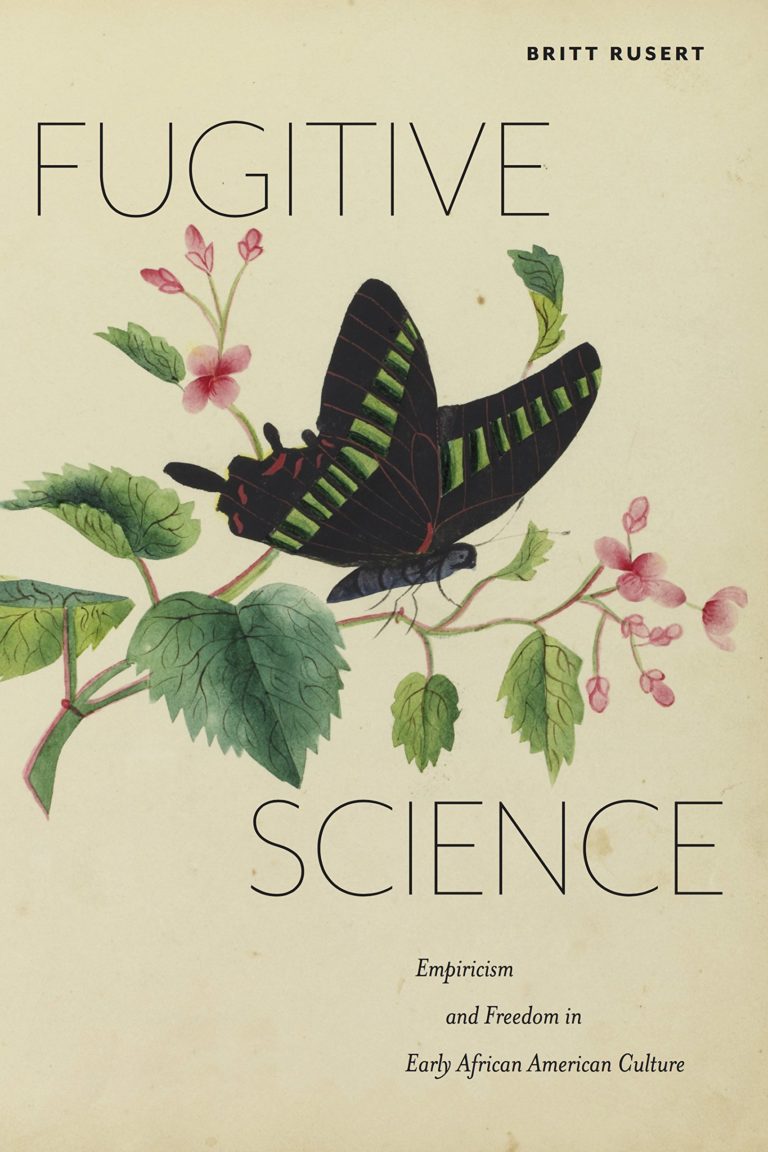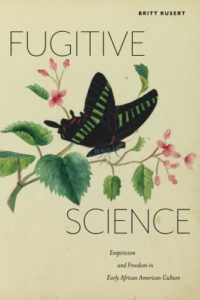After the Statues Have Fallen

If pop culture is to be believed, 2017 was a good year for black science, science fiction and fictions of science. Hidden Figures introduced film-goers to the work of black female scientists like Mary Jackson and Katherine Johnson; science fiction fans anticipated Jordan Peele’s upcoming adaptation of Lovecraft Country; the universe of Black Panther rapidly expanded through comics and film; and Octavia Butler’s dystopian Parable of the Talents (1998) was resuscitated due to its prescient portrayal of the fictive Senator Andrew Steele Jarret and his (in 1998, still un-trademarked) slogan: Make America Great Again. But, of course, the reasons for Butler’s sudden popularity reveal a bleaker state of affairs. If, this time around, Oscars were not quite so white, very few people would mistake 2017 as a good year for racial justice.
The hate-filled currents of Donald Trump’s presidency, freshly invigorated by Charlottesville, and the residual racism of scientific inquiry, converged in a September editorial in Nature, the most influential publisher in the sciences. In it, the anonymous author(s) defends the Central Park statue of J. Marion Sims, the nineteenth-century scientist who performed gynecological experiments on enslaved women’s bodies without anesthesia; as well as Parran Hall at the University of Pittsburgh, named after Thomas Parran Jr., director of the infamous Tuskegee experiment. To remove these figures from the public eye, the author(s) claim, would be to “whitewash history.”
As though history were some stable and pure truth to be apprehended by the intrepid man of science; as though history had not already been whitewashed by centuries of archives, monuments, museums, and curricula; as though we could not distinguish the descriptive question of “what happened” from the normative question of “what merits commemoration.” To make this kind of claim, in other words, requires a certain amount of confirmation bias—we selectively see what we want to see (for example, a statue of J. Marion Sims as the embodiment of scientific history) and fail to see the great and messy rest (the patients, plantation owners, investors, competing scientists, activists, etc.) To be fair, in their conflation of “history” with processes of history making, the editors propose alternatives—for example, contextual information or “equally sized” commemorative statutes to the victims—but these are inadequate and perhaps disingenuous suggestions. In moral life, commensurability is not measured by mass or circumference, and racist histories of science—histories that persist in the present-day medical community—cannot be countered with a contrite footnote. Instead of proposing true historical redress, the editorialists confirm the right to public space that these statues and buildings have always enjoyed.
In contrast, Britt Rusert’s Fugitive Science imagines what comes after the statues have fallen. Suffice it to say, she goes much further than an apologetic plaque, and her results are fascinating. Fugitive Science insists on the role of African American scientific actors not as objects or specimens, but rather as active participants working within and against a dynamic set of scientific discourses and practices. Deploying Foucault’s concept of counter-science, Rusert intervenes in narratives of racist pseudo-science, establishing not only a more inclusive history of early American science, but in doing so, arguing for a revision of the concept of the human. Rusert’s work, both masterful and suggestive, should not only be of interest to scholars of African American literature and antebellum science, but it also contributes to a number of critical turns, including the post-human, the environmental humanities, and archive theory.
Rusert’s first chapter begins with a figure hostile to the notion of black “radical empiricisms” (20)—or, indeed, hostile to blackness itself: Thomas Jefferson, whose infamous claims of African deficiency in Notes on the State of Virginia (1785) sparked a tradition of antebellum black critique, beginning with Benjamin Banneker, and comprising David Walker, James W.C. Pennington, and James McCune Smith, among others. In tracing this tradition, Rusert intervenes in the centrality of Jefferson to antebellum racial theory. De-monumentalizing, as it were, the Founding Father, Rusert situates Banneker as the progenitor of African American science and even—in the chapter’s most suggestive sections—science fiction. Chapter two builds on the first chapter’s exploration of African American ethnologies through its consideration of black portraiture and ekphrastic writing as opaque “modes of resistance” to the racist scopic regime of antebellum science. Turning from iconicity to embodied practices of visuality, Rusert’s third chapter traces the cross currents between popular scientific lecture circuits and black performance in the United States and Britain. Here, Fugitive Science is at its most international, chronicling the transatlantic movements of figures like Frederick Douglass, William Wells Brown, William and Ellen Craft, and Henry Box Brown.
From the transatlantic, Rusert turns to the cosmic in her fourth chapter’s consideration of Martin Delany’s scientific inquiry. Reading Delany’s Blake alongside his writings on statistics, ethnology, astronomy, and electricity, Rusert highlights the linkage between planetary revolution and slave revolution in order to “imagine new worlds of freedom” (179). These expansive new worlds condense, in chapter five, into the feminized “tight spaces of the parlor and the classroom” (27). Here, Rusert considers the scientific work (capaciously defined to include friendship albums, natural history cabinets, and pedagogical lectures) of African American educator Sarah Mapps Douglass. Just as Rusert begins the book with a specter of racist pseudoscience—Thomas Jefferson—so too does she close the book with meditations on an equally looming figure: Sarah Baartman and the pathologizing of black women’s bodies. In doing so, Rusert moves from speculative fiction to speculative archival theory, working with and against her archives to conjecture on—although, as she admits, not fully recover—black women’s challenges to racial science. Through attention to the “gaping silences and gaps” (184) of the archive surrounding Baartman and Douglass, Rusert challenges the “Hottentot paradigm” with a “speculated, fragmented history of black women engaging with natural science” (217).
I left Fugitive Science with two questions. The first concerns the scope of the project: while Rusert declares that nineteenth-century racial science “spanned the globe,” (11), her objects of inquiry are nearly all Anglo-American. What she calls a “deeply Atlantic science” (13) remains, in the end, largely a story of Anglophone U.S. culture and, occasionally, its dealings with Britain. There is plenty of rich terrain here alone and Rusert treats that terrain both thoughtfully and thoroughly. I would, however, be keen to see scholars take up Rusert’s promise of a “global and diverse network of experiments, theories, and practitioners” (13) by engaging with other sub- and supra-national units, especially across Native American, African, Caribbean, and Latin American cultures. When we shift Rusert’s axis from the Anglophone to the multilingual, from the transatlantic to the hemispheric, global, or diasporic, I suspect new histories will become legible, expanding and deepening Rusert’s suggestive claim that natural science “meditates(s) on the category of the human itself” (6).
This spatial and linguistic shift brings me to my second question: how do we demarcate scientific doctrines and practices from pseudoscience in a way that is both inclusive and reparative? Many of the discourses and practices Rusert describe look like science, sound like science, smell like science, but are not necessarily science. This is not a criticism: what we consider “science” has been formed through a historical process of normative evaluation. But can we draw the boundaries of “science” broadly enough to include diasporic traditions of folk knowledge production but narrowly enough to exclude racist theories, now deemed pseudoscientific, that have been used to oppress and dehumanize people of African descent? At times, it seems that Rusert’s counter-narrative to racist pseudo-science does not have the conceptual space to address folk beliefs and spiritual practices that are epistemically warranted but not necessarily systematized. Although Rusert gestures toward these traditions (what she calls a vernacular “underbelly of fugitive science” [29] and, at times, “mysticism” [6]), diasporic spiritual traditions, including Conjure, Vodou, and Obeah, are largely subordinated to those knowledge disciplines that a twenty-first-century reader would recognize as scientific: for example, astronomy, physiology, geology, botany and (more controversially) ethnology. Scholars seeking to build on Rusert’s work may want to consider the interplay between institutional and folk knowledge in order to expand, revise, and internationalize our criteria for demarcating pre-twentieth-century scientific inquiry.
This article originally appeared in issue 18.2 (Spring, 2018).
Mary Grace Albanese is an assistant professor of English at Binghamton University (SUNY). Her work has appeared in American Literature, ESQ, and The Henry James Review, among other venues.
